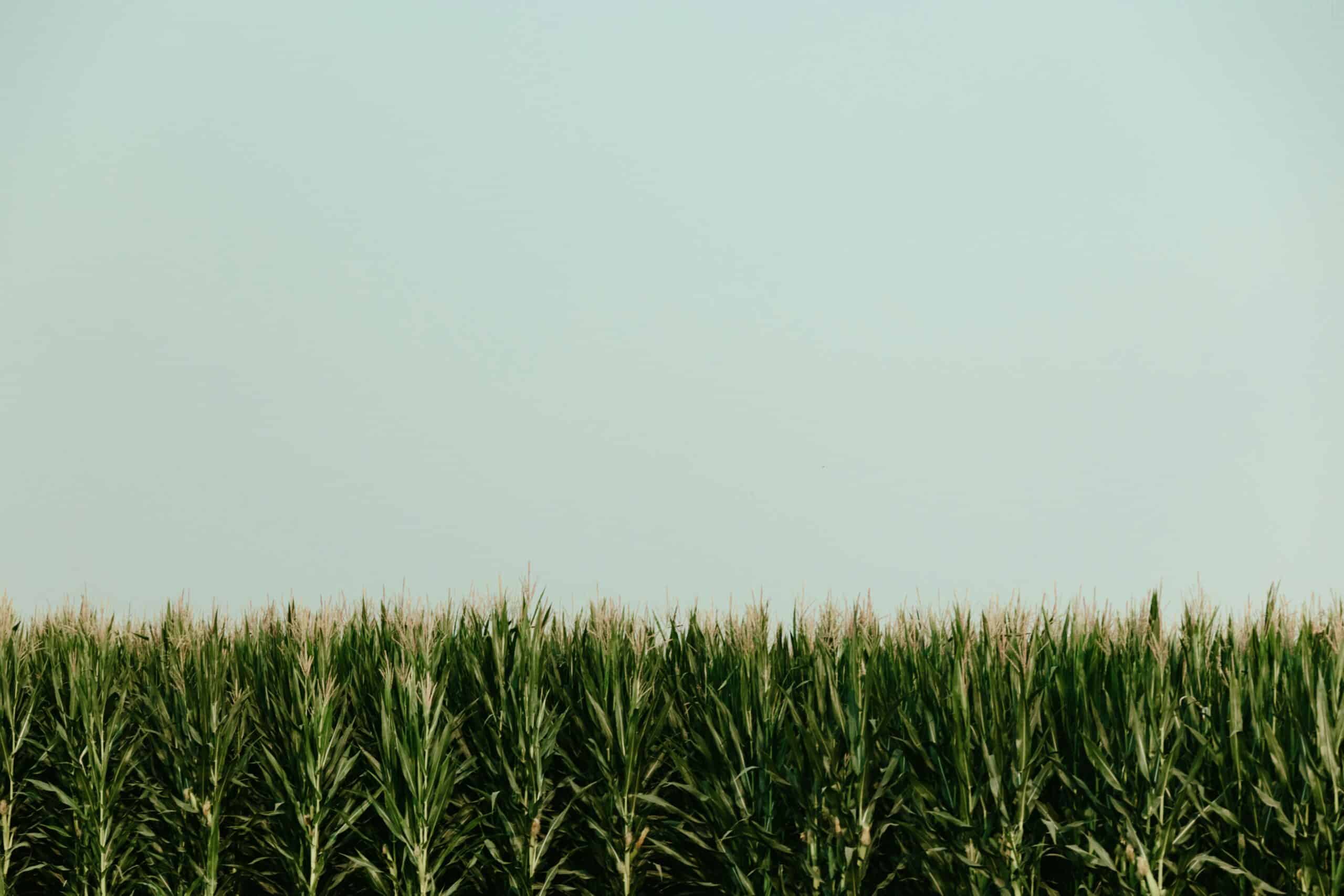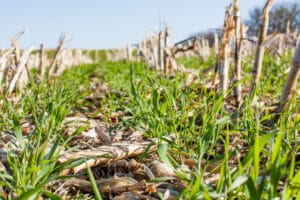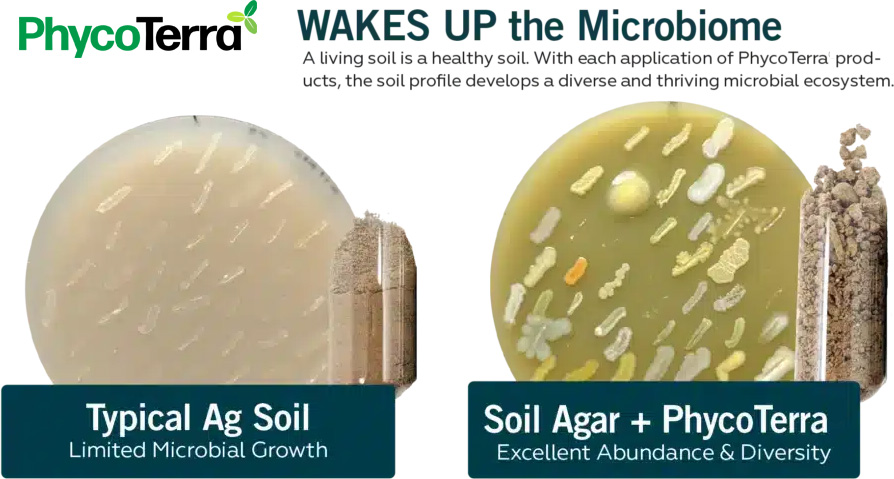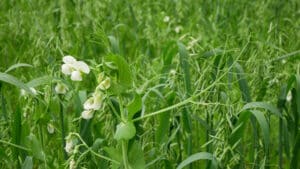Apr 11, 2025



Have you ever heard that cover crops aren’t profitable? Worried that planting cover crops might hurt your yield potential? Or maybe you think the benefits for the soil don’t outweigh the inconvenience or cost of planting another crop.
Unfortunately there are a lot of misconceptions about cover crops. Yet studies have found regenerative practices, like keeping soil covered with living vegetation throughout the year increases yield potential and profits. These financial returns are notable.
One study found cover crops increased grower’s net income from $14 per acre to $151 per acre. Another study with 100 farmers found a 85% to 88% increase in their net income on their corn and soybeans.
Here’s everything you need to know if you want to increase your yield potential by planting a cover crop.

The logistics of planting and killing cover crops stops some farmers from trying to plant one. If you’re nervous about the effects a cover crop could have on your farm, do a side-by-side test in one area before committing to planting on the entire farm.
Here’s how to plant no till cover crops:
For most cover crops, flowering indicates the best cutting time to capture nutrients and add organic matter to the soil.
It’s a good idea to pair your burndown with an herbicide with a carbon-rich food for microbes in the fall like PhycoTerra. This will help you avoid unwanted pests and feed soil microbes. 75% of soil microbes are dormant or inactive. By feeding them in the fall when you’re done harvesting, you wake them up and speed up the breakdown of cover crop residue.
If you need to kill a cover crop and want to avoid tillage, consider mowing before the cover crop goes to seed. Mown crop residue can be great mulch and weed suppression. You can also incorporate residue with a disc.
If you need to increase soil warming temperatures, and reduce residue before planting, pair a burndown with a soil microbial food, like PhycoTerra. Our award-winning product has been found to increase topsoil temperatures by 5 degrees Fahrenheit at time of planting by decreasing mass reduction by 21%.
What grower doesn’t want an earlier planting date?
Cover crops have a long list of benefits for soil, yield potential, the environment and can create additional revenue streams.
You can receive all of the following benefits when planting a cover crop, which can impact your crop yield potential.
From weeds to leaching, cover crops can make a grower’s job easier.
By planting a cover crop you’ll be improving soil health, which can also improve yield potential and farm operations as a ripple effect.
Certain cover crops can also be used as an additional revenue stream in the following ways:
One benefit worth noting that compounds over time is feeding soil microbes. Once your soil microbes are fed, they’ll continue to support higher yield potentials, improving soil health and farm operations.
Crops and soil microbes have a symbiotic relationship. When your soil microbes are abundant and active, your crops are healthy and thriving. While they can survive without each other being present, they cannot thrive or reach their full potential alone. In fact, there are 1,000 to 2,000 times more microbes in soil with living roots.
When you feed microbes they acquire and recycle nutrients in the soil to plants in exchange for carbohydrates. The microbes support the cash and cover crops with establishment and can increase stand and germination.
Since microbes break down organic matter, they reduce crop residue and improve soil texture and structure. When beneficial microbes are active, there’s better soil aggregates, less nutrient and water leaching, and less erosion. The soil texture and structure improves thanks to a glue-like substance bacteria create (extracellular polymeric substances, or EPS), and the intricate net-like web (hyphae) that are formed by fungi that hold soil particles together.
While important, soil microbes are only part of the food web. Without roots in the ground we decrease the functionality of the soil web ecosystem. When beneficial microbes suffer, so does the rest of the food soil web – including your cash crops come spring.

The best cover crops have some or all of the following characteristics:
Finally, make sure that the cover crop your planting doesn’t suppress the cash crops, either via chemical or microbial effects, that you’re planning to grow in the upcoming years.
Some studies have found the cover crop investment breaks even in as little as year three, given the cost of seeds.
Not all cover crops are a great fit for every field. Consider the following before planting:
While cover crops can impact soil temperatures, it’s only a problem during the first few years of cover crop planting in no-till soils. As the soil’s organic matter levels increase, the soil darkens and absorbs more sunlight, heating the soil.
After a few years of organic matter gathering on topsoil, organic compost will give off a heat while decomposing, warming soil.
If you live in a cooler region, keep in mind that cover crops will have the biggest impact on your soil temperatures and planting windows.
There are some issues all growers should consider before planting.
First, no grower wants to deal with uneven residue or run away crops when they go to plant in the spring.
Also, cover crops can tie up nitrogen, so be sure to plant complimentary cover crops to your cash crops.
Some cover crops can host diseases or pests, which is why it’s a good idea to pair herbicides or pesticides if your fields have a known issue.
Avoid planting on cooler or wetter fields, which can lead to compaction problems in the future. These planting conditions tend to be more common at the times when growers plant cover crops.
Cover crops can also create an alternative revenue stream or cost savings by opening fields to grazing. This extends the grazing season, and most cover crops surpass most classes of ruminant grazing livestock.
Wheat and rye, in particular, provide early grazing in the spring prior to turnout on perennial pastures.
This practice can also act as a slow-release nutrient provider. Manure is added to the field while livestock graze. Soil microbes consume the carbon in the manure, releasing nitrogen that crops are then able to access. This slow-releasing and long-lasting nutrient source can continue to feed cash crops in the spring.
Try to avoid livestock compaction issues. Grazing animals normally only cause surface compaction four to six inches deep. If you’re experiencing a wet spring, there’s a greater chance for increased soil compaction damage.
Rotating animals quickly on cover crop fields can reduce soil exposure. The biological activity from a supported microbiome, in planting cover crops will help soil rebound and prevent compaction.

From grains, to legumes, to broadleaves – there are a lot of choices when it comes to cover crops. Plus, you can also mix multiple plants to provide your soil with multiple modes of support.
For example, grass and legumes are a common combo due to their high levels of biomass production, which creates thick mulch that suppresses weeds and adds organic matter back into the soil. This combination balances the C:N ratio and provides a gradual release of nitrogen.
Or, for compact soils, pick a cover crop with deep or wide roots like daikon radishes. Here are a few cover crop categories and their benefits.
|
Cover Crop Category |
Benefits |
|
Grains (annual grasses, rye, oats, wheat) |
|
|
Legumes (peas, soybeans, clover, vetch) |
|
|
Broadleaves (buckwheat, alyssum, mustard) |
|
If you need to narrow down what cover crop is best for you, check out our extensive list of cover crops for any season.
Planting cover crops is easier and more profitable than many farmers may expect because of the reputation these types of crops have acquired as “expensive” or “unprofitable.” Yet science shows having roots in your fields year around not only pays for itself over time, but actually turns a profit.
Once you’ve picked a cover crop, make sure you put a plan in place to feed and wake up the beneficial microbes in your soil. Jump starting the symbiotic relationship can help create healthier soil, and healthier yields when it’s time to plant your cash crops.
Fill out a contact form to talk to an expert about the first step of supporting your cover crops, cash crops, and soil microbes.
Note: All trial data is current as of blog posting. For the most up to date trail data, please visit our trials page.